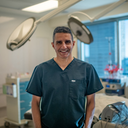I have an appointment for a tiplasty where the tip of my nose will be lifted. The doctor said he will use an ear cartilage strut to do this but as I have done more research I see that ear cartilage "warps".My question is, what exactly does "warp" mean? What are the chances of it "warping" and is it normal for a doctor to use ear cartilage instead of septum cartilage from someone who has never had a Rhinoplasty done before? Thank you.
Answers (18)
From board-certified doctors and trusted medical professionals

Dr. Steven J. Pearlman, MD, FACS
Board Certified Facial Plastic Surgeon
Answer
More Rhinoplasty Questions
See all Rhinoplasty Q&AWE SEND PRETTY
EMAILS
What’s trending? Who’s turning heads? Which TikTok myths need busting? We’ve got you. No fluff, no gatekeeping—just real talk. Get our free, unfiltered newsletter.








